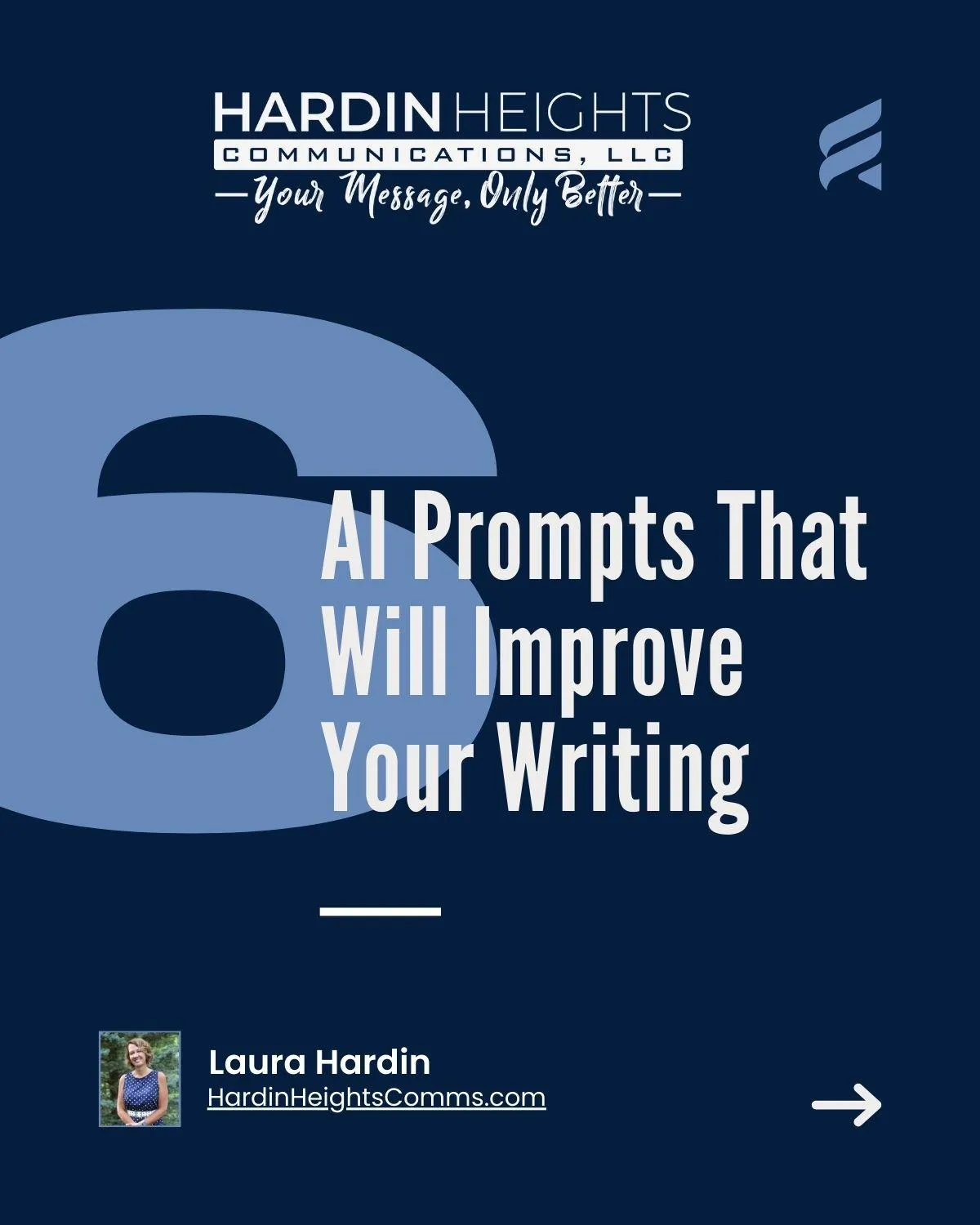
I Won't Let AI Write For Me - But Here's How I Use It Daily
When You Don’t Want AI to Write For You - But Do Want It to Make Your Writing Better
One of the big misconceptions about using AI tools is that they’re only good for generating text wholesale. But for those of us who care deeply about the authenticity of our voice - especially in high-stakes change communications - the real value of AI lives in refinement, not replacement.
Think of AI as your writing coach or editor at scale. Your AI tool can highlight your blind spots, uncover audience confusion, and stress-test your message before it reaches your employees or clients. The trick is knowing what to ask for.
Here are some excellent prompts to use when you want to improve your own writing - not outsource it.
Identify places where my audience might get confused or have questions.
AI is great at role-playing your audience. By asking it to read your draft with a new employee’s perspective or technical but not executive background, you’ll quickly see where jargon, assumptions, or missing context might cause friction.
This helps you tighten your explanation before misunderstandings take root. Describing and defining your audience is important if you use this prompt.
Take the time to dig into what you know they know – what you think they know – and let AI take it from there.
What’s missing that would make this message more complete?
When we’re close to our own work, we often overlook details that seem obvious but aren’t to the reader. AI can scan your draft like a fresh set of eyes and highlight:
Supporting data you never included
Questions the audience might naturally ask
Clarifications on timelines, responsibilities, or next steps
Essentially, it helps you spot the gaps you couldn’t see from the inside.
Segment this message for different knowledge levels or audiences.
Not everyone in your organization comes into a change with the same context. AI can take your draft and suggest how it might be adapted for:
Frontline employees (focused on changes to daily work)
Managers (focused on implementation and how to support teams)
Executives (focused on business outcomes and risks)
This kind of segmentation ensures you’re meeting people where they are - without rewriting from scratch.
Suggest ways to make this message resonate emotionally as well as logically.
Corporate communications isn't just about transmitting facts. It's about building trust. Ask AI to analyze your tone. Does it sound cold, overly formal, or too vague? Then request something like this: Please make this sound more empathetic and supportive without losing the context of this message? This is especially valuable during times of uncertainty.
Yes, I use please and thank you when I prompt AI.
Yes, I read the article that says it’s costing us a bajillion dollars to do this.
No, I don’t care.
Help me shorten and sharpen this message.
Sometimes, long drafts hide your true intent. Letting AI take a pass at tightening it up helps you get to the heart of your message: crisp headlines, simpler vocabulary, and fewer redundancies. This is particularly useful when you need executives or employees to take action quickly.
I also use AI to generate hooks and engaging calls to action when I get stuck.Sometimes they land, sometimes they are garbage, sometimes the garbage inspires my own revision.
What channel(s) might work better than email to deliver this message?
We default to written memos or newsletters, but AI can suggest alternative formats:
A one-minute leader video message (PS AI can write this up for you)
A team huddle script for managers (PS AI can write this up for you)
A quick infographic (PS AI can write this up for you)
FAQ sheets for self-service clarity (PS AI can write this up for you)
This keeps your message from getting buried in inboxes and tailors delivery to how people prefer to process information.
***PPS I never take the AI copy directly. I read, re-read, and alter accordingly. It’s not perfect, it gets stuff wrong, I always double check data, content, context and adjust – a lot!
Why This Matters
In times of change - a merger, a restructure, or a new process - communications need to work harder. People first need clarity, then context, and finally—confidence. AI won’t replace the leader’s voice or the communicator’s experience, but if used well, it sharpens your thinking and ensures your message isn’t just heard but truly understood.
If you’re leading your team through transition and want your communications to land with clarity and impact, don’t think of AI as the writer - think of it as your behind-the-scenes strategist, helping you say what you mean in the way your people most need to hear it.
